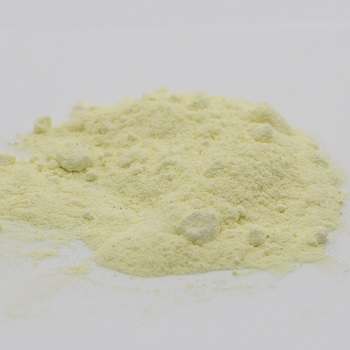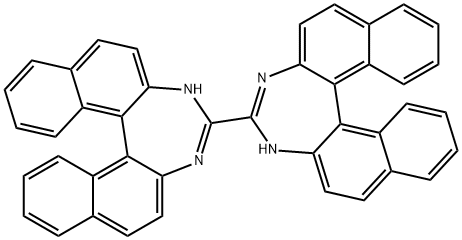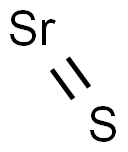Lithium sulfide
Synonym(s):(lithiosulfanyl)lithium
- CAS NO.:12136-58-2
- Empirical Formula: Li2S
- Molecular Weight: 45.95
- MDL number: MFCD00011085
- EINECS: 235-228-1
- SAFETY DATA SHEET (SDS)
- Update Date: 2024-12-18 14:08:57

What is Lithium sulfide?
Chemical properties
Lithium sulfide is the inorganic compound with the formula Li2S. It crystallizes in the antifluorite motif, described as the salt (Li+)2S2−. It forms a solid yellow-white deliquescent powder. In air, it easily hydrolyses to release hydrogen sulfide (rotten egg odor) Lithium sulfide is prepared by treating lithium with sulfur. This reaction is conveniently conducted in anhydrous ammonia. The THF-soluble triethylborane adduct of lithium sulfide can be generated using superhydride.

Lithium sulfide (Li2S) is considered the promising cathode material for its high theoretical capacity, high melting point, affordable volume expansion, and lithium composition.
Physical properties
Lithium Sulfide, Li2S, is an anti-fluorite semiconductor with a band-gap of 3.865 eV. It also has exactly the same valence electron count, Ne, and atomic number, Z, as magnesium diboride, MgB2. Both have almost the same formula weight. This qualifies Li2S as a magnesium-diboride like material. Li2S passes the same computational material specific test for superconductivity as MgB2.
Lithium sulfide is a much studied material, though never tested for superconductivity. Li2S can exist in two forms: orthorhombic and cubic. The orthorhombic form belongs to space group Pmnb and has dimensions: a = 3.808Å; b = 6.311Å; c = 7.262Å. It has density of 1.75g/cm3 . The cubic version has density of 1.63g/ cm3, belongs to space group Fm-3m and has cubic dimensions 4.046Å. The electronic structure and density of states indicate that cubic Li2S is an indirect band-gap semiconductor with a band gap of 3.865 eV. Lithium sulfide melts between 900 – 975 degrees centigrade.
The Uses of Lithium sulfide
Lithium sulfide (Li2S) is a product specially designed for the use in high performance batteries which can be either applied as electrode material or as precursor for solid electrolytes. It as an electrode material not only has high capacity but also overcomes many problems caused by pure sulfur electrodes.
Lithium sulfide is an anti fluorite semiconductor (bandgap 3.865eV). It exists in orthorhombic and cubic structures. The densities of the orthorhombic and cubic structures are 1.75g/cm3 and 1.63g/cm3 respectively.
Lithium sulfide has been studied as a MgB2- like superconductor. It is also used as a cathode material in rechargeable lithium-sulfur batteries.
The Uses of Lithium sulfide
Lithium sulfide has been studied as a MgB2- like superconductor. It is also used as a cathode material in rechargeable lithium-sulfur batteries.
Preparation
Lithium sulfide, Li2S, is formed in the reaction of lithium with sulfur in liquid ammonia, by the decomposition of the ethanol adduct of lithium hydrogen sulfide with lithium ethanolate, and, more recently, by the reaction of hydrogen sulfide with lithium amylate to yield lithium hydrogen sulfide, LiSH, which is thermally decomposed in a vacuum to yield the sulfide. A very high quality anhydrous lithium sulfide may be prepared by the reaction of lithium metal and hydrogen sulfide in tetrahydrofuran if care is taken to exclude water. The reaction product is filtered from the reaction medium, and it is vacuum dried to remove tetrahydrofuran and to decompose the small amount of lithium hydrogen sulfide which forms. Lithium sulfide is reported to have an antifluorite structure. Lithium sulfide is readily hydrolyzed, even by water in the air, yielding hydrogen sulfide. The sulfide also reacts with sulfur to form a variety of polysulfides.
General Description
Lithium sulfide is an anti fluorite semiconductor (bandgap 3.865eV). It exists in orthorhombic and cubic structures. The densities of the orthorhombic and cubic structures are 1.75g/cm3 and 1.63g/cm3 respectively.
Toxicology
Large doses of lithium ion have caused dizziness and prostration, and can cause kidney damage if sodium intake is limited. Dehydration, weight loss, dermatological effects, and thyroid disturbances have been reported. Central nervous system effects that include slurred speech, blurred vision, sensory loss, ataxia, and convulsions may occur. Diarrhea, vomiting, and neuromuscular effects such as tremor, clonus, and hyperactive reflexes may occur as a result of repeated exposure to lithium ion.
Properties of Lithium sulfide
| Melting point: | >900°C |
| Density | 1.66 g/mL at 25 °C (lit.) |
| storage temp. | 2-8°C |
| form | Powder |
| Specific Gravity | 1.66 |
| color | Yellow |
| Water Solubility | soluble in water and ethanol |
| Sensitive | Moisture Sensitive |
| InChI | InChI=1S/2Li.S |
| CAS DataBase Reference | 12136-58-2(CAS DataBase Reference) |
| EPA Substance Registry System | Lithium sulfide (Li2S) (12136-58-2) |
Safety information for Lithium sulfide
| Signal word | Danger |
| Pictogram(s) |
 Corrosion Corrosives GHS05  Skull and Crossbones Acute Toxicity GHS06 |
| GHS Hazard Statements |
H301:Acute toxicity,oral H314:Skin corrosion/irritation |
| Precautionary Statement Codes |
P260:Do not breathe dust/fume/gas/mist/vapours/spray. P270:Do not eat, drink or smoke when using this product. P280:Wear protective gloves/protective clothing/eye protection/face protection. P303+P361+P353:IF ON SKIN (or hair): Remove/Take off Immediately all contaminated clothing. Rinse SKIN with water/shower. P305+P351+P338:IF IN EYES: Rinse cautiously with water for several minutes. Remove contact lenses, if present and easy to do. Continuerinsing. |
Computed Descriptors for Lithium sulfide
| InChIKey | ZWDBUTFCWLVLCQ-UHFFFAOYSA-N |
| SMILES | S([Li])[Li] |
Lithium sulfide manufacturer
New Products
Tert-butyl bis(2-chloroethyl)carbamate (S)-3-Aminobutanenitrile hydrochloride N-Boc-D-alaninol N-BOC-D/L-ALANINOL N-octanoyl benzotriazole 4-Hydrazinobenzoic acid 3,4-Dibenzyloxybenzaldehyde 1,1’-CARBONYLDIIMIDAZOLE R-2-BENZYLOXY PROPIONIC ACID 1,1’-CARBONYLDI (1,2-4 TRIAZOLE) 4-HYDROXY BENZYL ALCOHOL 3-NITRO-2-METHYL ANILINE (2-Hydroxyphenyl)acetonitrile 4-Bromopyrazole 5-BROMO-2CYANO PYRIDINE 5,6-Dimethoxyindanone 5-broMo-2-chloro-N-cyclopentylpyriMidin-4-aMine 4-methoxy-3,5-dinitropyridine 2-(Cyanocyclohexyl)acetic acid 2-aminopropyl benzoate hydrochloride 1-(4-(aminomethyl)benzyl)urea hydrochloride tert-butyl 4- (ureidomethyl)benzylcarbamate diethyl 2-(2-((tertbutoxycarbonyl)amino) ethyl)malonate Ethyl-2-chloro((4-methoxyphenyl)hydrazono)acetateRelated products of tetrahydrofuran








You may like
-
 12136-58-2 Lithium sulfide 99%View Details
12136-58-2 Lithium sulfide 99%View Details
12136-58-2 -
 Lithium sulfide CAS 12136-58-2View Details
Lithium sulfide CAS 12136-58-2View Details
12136-58-2 -
 Lithium sulfide CAS 12136-58-2View Details
Lithium sulfide CAS 12136-58-2View Details
12136-58-2 -
 Lithium sulfide CAS 12136-58-2View Details
Lithium sulfide CAS 12136-58-2View Details
12136-58-2 -
 Lithium sulfide CAS 12136-58-2View Details
Lithium sulfide CAS 12136-58-2View Details
12136-58-2 -
 Lithium sulphide CAS 12136-58-2View Details
Lithium sulphide CAS 12136-58-2View Details
12136-58-2 -
 Lithium sulphide, 99.9% CAS 12136-58-2View Details
Lithium sulphide, 99.9% CAS 12136-58-2View Details
12136-58-2 -
 Lithium sulfide CAS 12136-58-2View Details
Lithium sulfide CAS 12136-58-2View Details
12136-58-2